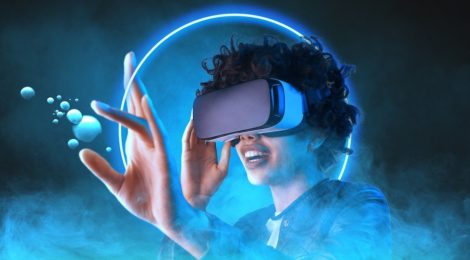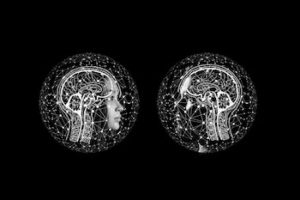
Virtual Reality Brings New Psychedelic Possibilities
Virtual Reality (VR) is making waves in the field of mental health as emerging technologies have advanced in the last decade. Of particular interest to researchers this year is the potential role of VR in psychedelic experiences, both as a possible non-drug alternative as well as a companion to psychedelic therapy.
Recent research describes an innovative form of interactive group VR experiences, Isness-D, with the ability to produce comparable effects to those of psychedelics such as LSD and psilocybin mushrooms. This new development has piqued the interest of researchers who are also curious about its compatibility with psychedelic therapy, as well as its ability to perhaps prevent a bad trip – the primary potentially adverse effect of taking a psychedelic substance.
Inspired by a near-death experience resulting from falling over 30 meters on a mountain hike, David Glowacki, scientist, digital artist, and founder of the Intangible Realities Laboratory (IRL) developed Isness-D to recreate his life-altering experience. Glowacki specializes in scientific simulation as well as visualization and is recognized for his work on immersive applications with interactive multi-person VR.

Recent research has demonstrated that group VR experiences produce effects similar to psychedelics, such as the common subjective feeling of ego-dissolution (also referred to as ego- death), transcendence, or self-actualization. Experiencing an epiphany and feelings of connectedness with the universe, as many often report after using psychedelics, was also achieved through interactive group VR.
But the research is still in early stages and we don’t know a lot about whether VR formats like Isness-D alone, or a combined experience with psychedelic therapy, can activate the same brain mechanisms that psychedelics do.
As psychedelic research continues to document the ability to reduce symptoms of PTSD, depression, anxiety, addiction, eating disorders, and so on, the brain mechanisms that facilitate these changes are only partially understood. The emerging understanding of how psychedelics work in the brain largely points to the ability to enhance neuroplasticity, referring to brain malleability, as well as increasing brain entropy – one’s mental repertoire and information processing capacity.
According to psychologist Jeff Tarrant, Chief Science Officer for Healium, a VR program that combines meditation and neurofeedback, increasing entropy is achievable through virtual reality experiences. This was particularly the case for those he observed in his study using VR in a meditation context. At his NeuroMeditation Institute in Oregon, Tarrant offers psychedelic therapy along with other neurofeedback and VR-enhanced services.
Tarrant doesn’t think VR will fully replace psychedelics, but he likes the idea of alternative approaches. He explains that a particular junction in the brain called the superior parietal lobule is responsible for creating a “boundary between the self and other.” When this area of the brain shuts off as a result injury or electrical stimulation, people become more empathic, spiritually oriented, and have transcendent experiences. Similar to the “ego dissolution” effect of psychedelics as Tarrant pointed out, “That’s what may be happening with that Isness-D program, is that you’re actually downshifting the normal functioning of that part of the brain.”

Tarrant notes the research is novel, so it may be premature to start combining Isness-D with psychedelic therapy. Although some research has suggested that VR could prove useful to optimize psychedelic sessions, more research is needed.
And VR alone is not for the faint of heart. Similar to the dizziness that many gamers experience when they first start using VR headsets, occasional wooziness among a small portion of Isness-D users was reported.
Aligned with current research perspectives, Tarrant highlights how Isness-D could potentially be used in psychedelic therapy as a preparatory tool for those interested in slowly transitioning toward a complete substance-enabled psychedelic experience. At the same time, through an interactive group VR experience like Isness-D and with continued refinement, it may become possible that drugs won’t be necessary at all for those interested in a psychedelic-like experience.
–Michelle Kim
Image Credits:
Feature: Riki32 at Pexabay, Creative Commons
First: geralt at Pexabay, Creative Commons
Second: D-G-M at Pexabay, Creative Commons



